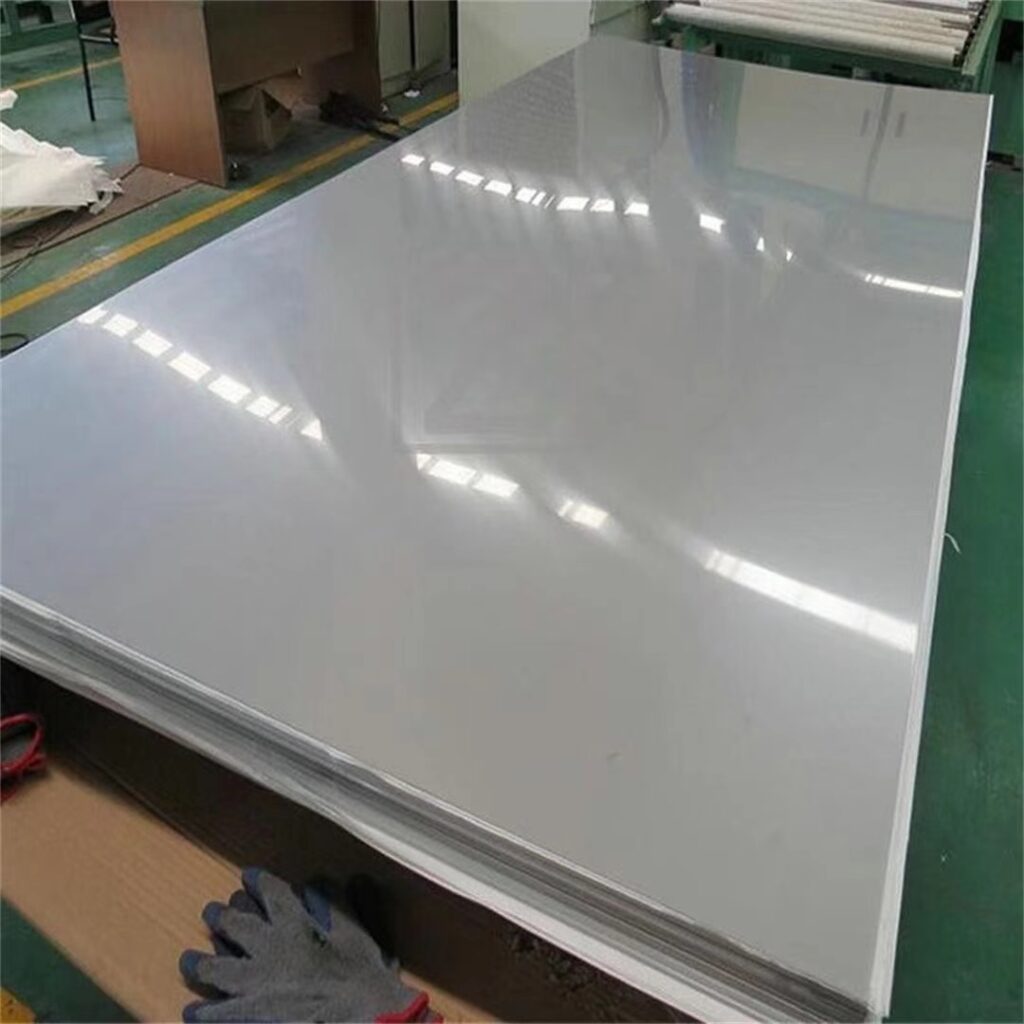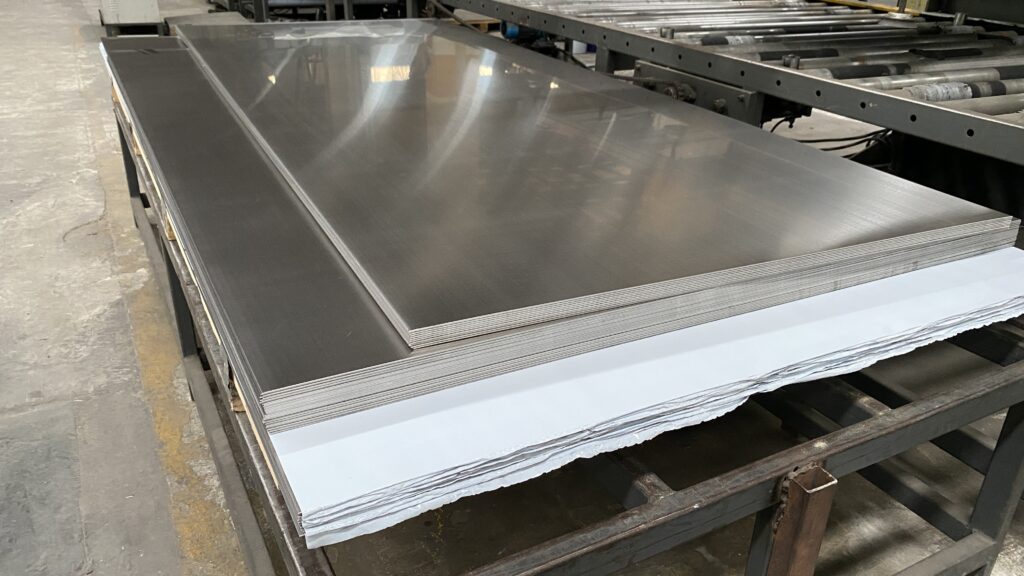Welcome to My Blog!
Before we dive into the content, I’d love for you to join me on my social media platforms where I share more insights, engage with the community, and post updates. Here’s how you can connect with me:
Facebook:https://www.facebook.com/profile.php?id=100090063158454
Now, let’s get started on our journey together. I hope you find the content here insightful, engaging, and valuable.

Introduction
316 stainless steel is a widely-used material known for its superior corrosion resistance and strength, commonly applied in environments that demand high durability and stability. A crucial property often assessed in materials like 316 stainless steel is its hardness, a measure of its ability to withstand deformation and resist wear. In this comprehensive guide, we’ll cover all aspects of 316 stainless steel hardness, including its composition, factors influencing hardness, common testing methods, and its applications in various industries. Understanding 316 stainless steel hardness allows manufacturers and engineers to select the right material for projects that require both strength and reliability.
1. What is Hardness in Stainless Steel?
Hardness in metals, including stainless steel, is generally defined as the material’s resistance to deformation, scratching, or indentation. For 316 stainless steel, hardness plays a critical role in its wear resistance and ability to withstand challenging environments. This property is especially crucial in industries where the material may encounter extreme conditions, abrasive forces, or mechanical stress. Hardness can be influenced by the chemical composition, processing methods, and various treatment processes, making it an essential characteristic for both quality control and application suitability.
2. Chemical Composition and Its Effect on 316 Stainless Steel Hardness
The chemical composition of 316 stainless steel largely determines its physical properties, including its hardness. The main elements found in 316 stainless steel and their effects on hardness are outlined below:
| Element | Typical Composition (%) | Role in Hardness |
|---|---|---|
| Chromium (Cr) | 16-18 | Enhances corrosion resistance and hardness |
| Nickel (Ni) | 10-14 | Adds ductility and toughness |
| Molybdenum (Mo) | 2-3 | Increases hardness, strength, and corrosion resistance |
| Carbon (C) | ≤ 0.08 | Contributes to hardness but may reduce corrosion resistance at high levels |
| Manganese (Mn) | ≤ 2 | Enhances hardness and tensile strength |
| Silicon (Si) | ≤ 1 | Adds strength and enhances oxidation resistance |
Each of these elements plays a role in 316 stainless steel hardness, with molybdenum and chromium being particularly critical. Molybdenum, in particular, boosts the steel’s resistance to both corrosion and mechanical wear.
3. Common Hardness Testing Methods for 316 Stainless Steel
The hardness of 316 stainless steel is measured through several standard testing methods, each offering a unique approach to gauging the material’s resistance to indentation or deformation. Here are the most commonly used tests:
3.1 Rockwell Hardness Test
The Rockwell hardness test is one of the most popular methods for testing stainless steel. For 316 stainless steel, the Rockwell B (HRB) scale is generally used, as it provides quick and reliable results.
- Typical Range for 316 Stainless Steel: 79–95 HRB
- Application Suitability: Common for on-site testing and field applications
3.2 Brinell Hardness Test
The Brinell hardness test uses a larger indenter and measures the diameter of the indentation. It’s particularly useful for testing metals with rougher surfaces.
- Typical Range for 316 Stainless Steel: 123–217 HB
- Application Suitability: Frequently used in labs and production environments
3.3 Vickers Hardness Test
The Vickers test, which uses a diamond indenter, provides very precise hardness values, making it suitable for a broad range of materials, including softer or thinner materials.
- Typical Range for 316 Stainless Steel: 145–210 HV
- Application Suitability: Suitable for precision engineering and smaller components
| Test Method | Load Range (N) | Typical Hardness Range for 316 | Best Applications |
|---|---|---|---|
| Rockwell B | 100 | 79-95 HRB | Field testing and general assessments |
| Brinell | 500-3000 | 123-217 HB | Manufacturing quality control |
| Vickers | 50-1000 | 145-210 HV | Precision components and lab testing |
4. Factors Influencing the Hardness of 316 Stainless Steel
Several factors influence 316 stainless steel hardness, impacting its applications and performance.
4.1 Cold Working
Cold working, or strain hardening, is a process by which 316 stainless steel’s hardness can be increased without heat treatment. When steel is cold-worked, the deformation at room temperature changes its crystal structure, making the material harder and stronger.
4.2 Heat Treatment
While 316 stainless steel is not commonly hardened through heat treatment like other steel types, specific annealing processes can slightly modify its properties. However, cold working remains the primary method for altering the hardness of 316 stainless steel.
4.3 Chemical Composition Adjustments
In cases where higher hardness is required, slight variations in the alloy composition—such as increasing carbon or chromium levels—can improve hardness without significantly compromising corrosion resistance.
5. Hardness Levels and Applications of 316 Stainless Steel
The hardness of 316 stainless steel makes it ideal for various applications across industries. Let’s explore some of these uses and how hardness contributes to their effectiveness:
5.1 Marine Environments
316 stainless steel hardness is advantageous in marine settings where both corrosion resistance and durability are essential. Components such as bolts, nuts, and even ship components made from 316 stainless steel can withstand the mechanical stress and corrosive saltwater exposure common in marine environments.
5.2 Food Processing
In the food industry, 316 stainless steel’s hardness makes it resistant to wear, even with frequent cleaning and exposure to acidic foods. Its ability to retain shape under pressure also extends its service life in this industry.
5.3 Medical Devices
316 stainless steel is often used in surgical tools and implants due to its biocompatibility and hardness, allowing it to withstand the wear and tear of repeated sterilization and use.
5.4 Chemical Processing
The hardness levels of 316 stainless steel contribute to its resilience in chemical processing plants where the material faces both corrosive substances and high mechanical stress. Valves, pipes, and other equipment rely on the combination of hardness and corrosion resistance to maintain efficiency and safety.
6. Advantages of 316 Stainless Steel Hardness
6.1 Enhanced Wear Resistance
Higher hardness values in 316 stainless steel contribute to better wear resistance, which means components made from this material can last longer in abrasive environments.
6.2 Increased Service Life
The durability imparted by the hardness of 316 stainless steel extends the service life of components, reducing the frequency of maintenance and replacements in demanding settings.
6.3 Versatility in Applications
The combination of hardness, corrosion resistance, and biocompatibility makes 316 stainless steel suitable for various applications, from medical instruments to marine components and food processing.
7. Frequently Asked Questions (FAQ)
Q1: How does 316 stainless steel hardness compare to 304 stainless steel?
316 stainless steel generally has a slightly higher hardness than 304 stainless steel due to its molybdenum content, which enhances both corrosion resistance and hardness.
Q2: Can the hardness of 316 stainless steel be increased by heat treatment?
No, 316 stainless steel hardness cannot be significantly increased through heat treatment. Instead, cold working is the preferred method for increasing hardness.
Q3: What is the typical Rockwell hardness range for 316 stainless steel?
The typical Rockwell hardness range for 316 stainless steel is between 79 and 95 HRB.
Q4: Why is 316 stainless steel used in surgical instruments?
316 stainless steel is used in medical devices because of its biocompatibility, corrosion resistance, and sufficient hardness, making it durable and safe for repeated sterilization and use.

Conclusion
316 stainless steel hardness is an essential property that makes it a popular material choice across various industries. From its chemical composition to the different hardness testing methods and factors that affect hardness, understanding these details helps in selecting the right material for specific applications. The hardness of 316 stainless steel offers enhanced wear resistance, extended service life, and versatility in demanding environments. By knowing how hardness levels impact performance, engineers and manufacturers can make more informed decisions, ensuring durability and reliability in every application.
This guide to understanding 316 stainless steel hardness covers all the essential details, empowering you to make informed choices about this versatile and durable material. Whether you’re working in marine, medical, food processing, or chemical industries, 316 stainless steel hardness levels can provide the strength and resilience needed for lasting performance.
